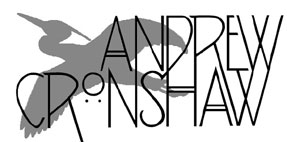
- Andrew Cronshaw website -
- Andrew Cronshaw MySpace -
- Cloud Valley Music website -
- Andrew Cronshaw website -
- Andrew Cronshaw MySpace -
- Back to Reviews Introduction page -
Written in Folk Roots issue 148, 1995
MINNA RASKINEN
Paljastuksia/Revelations
Olarin OMCD 64 (1995)
Essentially a set of unfretted strings stretched over a suitably-shaped box, and
coming in many forms throughout the Baltic region, the kantele bears the
responsibility of being Finland’s national instrument, in Kalevala legend first
created by Väinämöinen from the jawbone of a pike.
In Finland its archetypal form has five strings,
fanning out from a single horizontal metal attaching bar to individual tuning
pegs without direct contact with the soundboard. The same basic construction is
found in those with up to about 15 strings, but in the bigger kanteles the
design changes, including giving each of the strings (numbering up to about 36)
its own hitch pin.
These big, box kanteles have also been developed further by the addition of a
hinged damping plate, and in the case of the concert kantele of lever-operated
pitch bending rollers. This latter form, first made in the 1920s, has been seen
as the instrument for so-called “classical” kantele music, but recently its most
skilled and creative players, including Minna Raskinen, have sprung mainly from
the Folk Music Department of Sibelius Academy, inspired particularly by the
radical and witty work of player, composer and teacher Martti Pokela.
Raskinen, like most of these players, uses both
big and small kanteles, but on this album concentrates on her own compositions
for concert kantele.
There’s a melodic warmth about her music; her
technique is considerable, but it’s always in the service of expressiveness. The
kantele makes such a serenely beautiful sound that it would be easy to make
sweetly vacuous music; therefore it has to be challenged, and she does. She uses
its full range from rich ringing bass to rippling silvery high notes, and makes
full use of the possibility of using pitch levers to not only change key but to
bend a note as it’s played, producing singing notes sliding through the hovering
resonance of the other strings, as well as other techniques including harmonics,
damping, vibrato (achieved by pressing the string while playing a harmonic, and
evoking echoes of the time she’s spent in Japan and with Chinese musicians) and,
on the final track Pimeess’ Tanssii (Pocket Light Dance), hitting and
stroking the strings with a brush. The tunes have a satisfying balance between
strong established melodic structure and the extemporisation which is a central
feature of Finnish folk music, kantele playing in particular, and keeps it a
constantly developing, living thing.
© 1995
Andrew Cronshaw
You're welcome to quote from reviews on this site, but please credit the writer
and fRoots.
Links:
fRoots - The feature and
review-packed UK-based monthly world roots music magazine in which these reviews
were published, and by whose permission they're reproduced here.
It's not practical to give, and keep up to date,
current contact details and sales sources for all the artists and labels in
these reviews, but try Googling for them, and where possible buy direct from the
artists.
Helsinki's Digelius Music
record shop is a great source of Finnish roots and other albums.
CDRoots.com in the USA, run by
Cliff Furnald, is a reliable and independent online retail source, with reviews,
of many of the CDs in these reviews; it's connected to his excellent online magazine
Rootsworld.com
For more reviews click on the regions below
NORDIC
BALTIC
IBERIA (& islands)
CENTRAL & EASTERN EUROPE, & CAUCASUS
OTHER EUROPEAN AMERICAS OTHER, AND WORLD IN GENERAL
- Back to Reviews Introduction page -